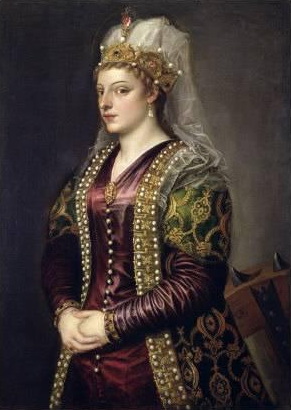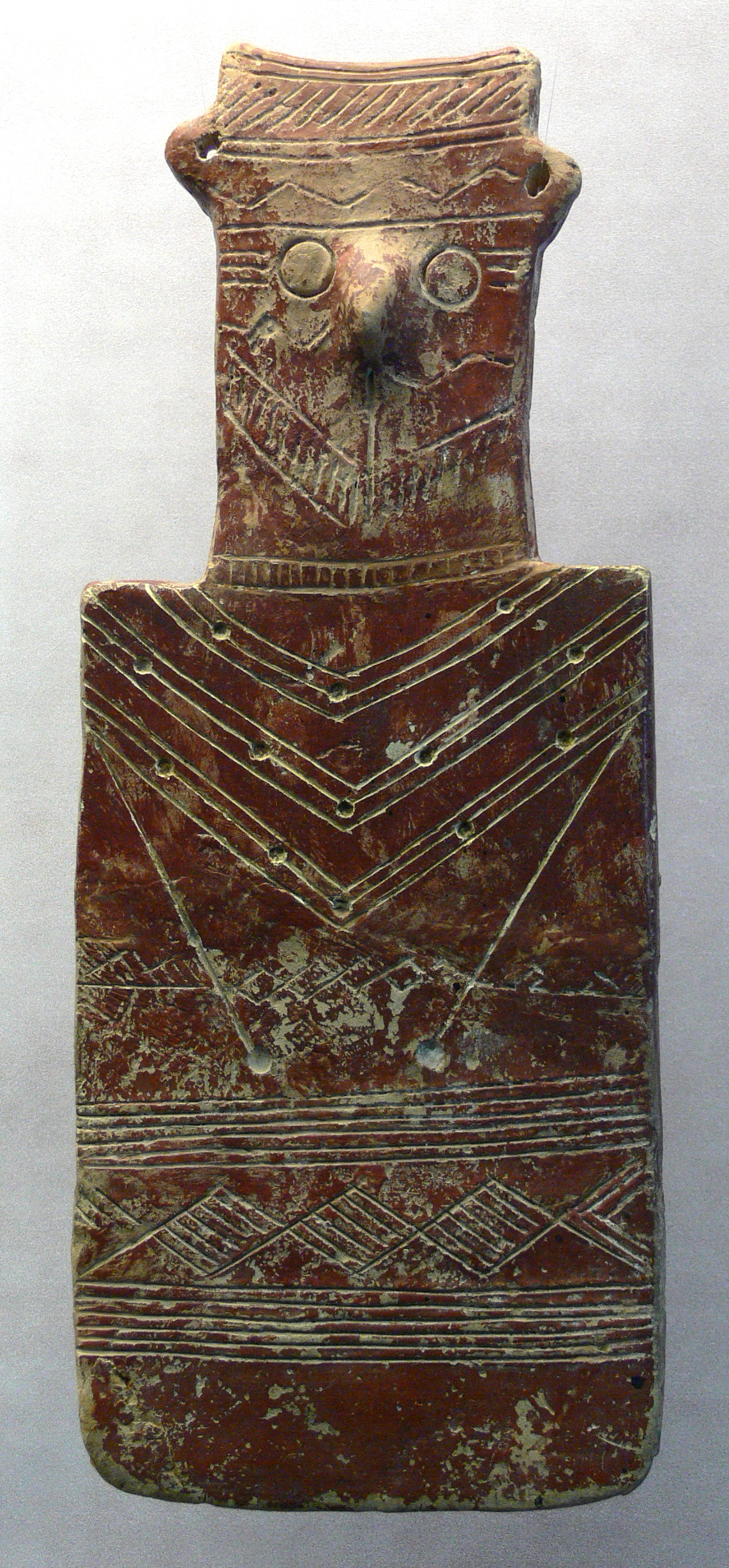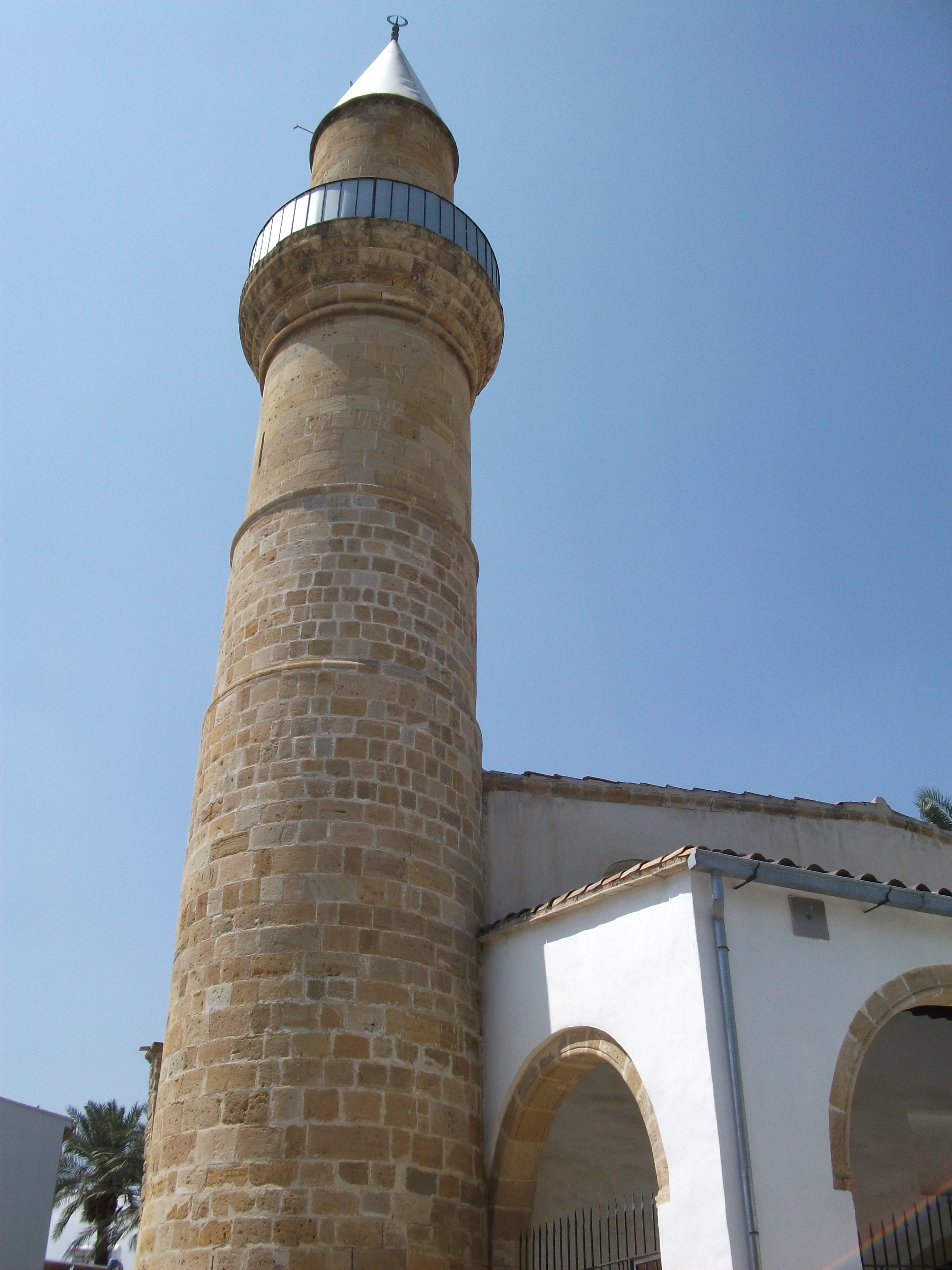|
Famagusta Gate
The Famagusta Gate ( tr, Mağusa Kapısı) is a gate in the Nicosia walls, Cyprus. It is the chief gate of the city: the Porta Giuliana, or "di sotto" of Fra Stefano Lusignano's " Chorograffia", known as Famagusta Gate in modern times. This construction, in the Venetian style has been copied from the famous Lazaretto Gate of Candia designed by Michael Sammicheli at the beginning of the 16th century, and consists of a vaulted passage through the earthwork rampart of the city with a carefully executed spherical dome, eleven metres (36') in diameter, in its centre. The passageway is large enough for two vehicles to pass, and it is lighted by a circular opening in the centre of the dome in the style of the Pantheon, Rome. On either side of this passage appear to be entrances into chambers now blocked up. The external doorway of the Porta Giuliana is a small archway in the re-entering angle or "orecchione" of the Caraffa bastion now somewhat injured by breakage of the arch stones, and t ... [...More Info...] [...Related Items...] OR: [Wikipedia] [Google] [Baidu] |
Nicosia 01-2017 Img08 Famagusta Gate
Nicosia ( ; el, Λευκωσία, Lefkosía ; tr, Lefkoşa ; hy, Նիկոսիա, Romanization of Armenian, romanized: ''Nikosia''; Cypriot Arabic: Nikusiya) is the largest city, Capital city, capital, and seat of government of Cyprus. It is located near the centre of the Mesaoria plain, on the banks of the River Pedieos. According to Greek mythology, Nicosia ( in Greek) was a siren, one of the daughters of Acheloos and Melpomene and its name translates as "White State" or city of White Gods. Nicosia is the southeasternmost of all EU member states' capitals. It has been continuously inhabited for over 4,500 years and has been the capital of Cyprus since the 10th century. The Greek Cypriot and Turkish Cypriot communities of Nicosia segregated into the south and north of the city respectively in early 1964, following the fighting of the Cyprus crisis of 1963–64 that broke out in the city. This separation became a militarised border between the Republic of Cyprus and Northern ... [...More Info...] [...Related Items...] OR: [Wikipedia] [Google] [Baidu] |
Nicosia Marathon
Nicosia Marathon (branded The Quantum Nicosia Marathon) is an international marathon (42.195 km) that courses through Nicosia. Its inaugural run was held in October 10, 2010. as a half-marathon race. It was founded in 2010. by the Athanasios Ktorides Foundation to commemorate 2500 years of Battle of Marathon. The course begins at the Famagusta Gate, chief gate of old Nicosia walls, and comes back. Description The Quantum Nicosia Marathon is organized and founded by the Athanasios Ktorides Foundation. It is branded as Quantum Nicosia Marathon after name of its main sponsor Quantum Energy. First Quantum marathon took place in Nicosia, Cyprus on October 10, 2010. as a half marathon and 4.6 km race. It was organized just 2.500 years after Battle of Marathon, which took place in 490 BC. More than 5.000 runners participated in first marathon race in Nicosia. Winner of first marathon race in 2010 was Konstantinos Poulios with time 1:06:31. Next marathon was organized on ... [...More Info...] [...Related Items...] OR: [Wikipedia] [Google] [Baidu] |
Buildings And Structures In Nicosia
A building, or edifice, is an enclosed structure with a roof and walls standing more or less permanently in one place, such as a house or factory (although there's also portable buildings). Buildings come in a variety of sizes, shapes, and functions, and have been adapted throughout history for a wide number of factors, from building materials available, to weather conditions, land prices, ground conditions, specific uses, prestige, and aesthetic reasons. To better understand the term ''building'' compare the list of nonbuilding structures. Buildings serve several societal needs – primarily as shelter from weather, security, living space, privacy, to store belongings, and to comfortably live and work. A building as a shelter represents a physical division of the human habitat (a place of comfort and safety) and the ''outside'' (a place that at times may be harsh and harmful). Ever since the first cave paintings, buildings have also become objects or canvasses of much artistic ... [...More Info...] [...Related Items...] OR: [Wikipedia] [Google] [Baidu] |
Tourist Attractions In Cyprus
Tourism is travel for pleasure or business; also the theory and practice of touring, the business of attracting, accommodating, and entertaining tourists, and the business of operating tours. The World Tourism Organization defines tourism more generally, in terms which go "beyond the common perception of tourism as being limited to holiday activity only", as people "travelling to and staying in places outside their usual environment for not more than one consecutive year for leisure and not less than 24 hours, business and other purposes". Tourism can be domestic (within the traveller's own country) or international, and international tourism has both incoming and outgoing implications on a country's balance of payments. Tourism numbers declined as a result of a strong economic slowdown (the late-2000s recession) between the second half of 2008 and the end of 2009, and in consequence of the outbreak of the 2009 H1N1 influenza virus, but slowly recovered until the COVID-19 pa ... [...More Info...] [...Related Items...] OR: [Wikipedia] [Google] [Baidu] |
Venetian Fortifications In Cyprus
Venetian often means from or related to: * Venice, a city in Italy * Veneto, a region of Italy * Republic of Venice (697–1797), a historical nation in that area Venetian and the like may also refer to: * Venetian language, a Romance language spoken mostly in the Veneto region * Venice, Florida, a city in Sarasota County, United States *The Venetian Las Vegas, a resort hotel and casino in Las Vegas, Nevada * The Venetian Macao, a hotel and casino in Macau, China *Venetian blind, or Venetian, a common type of window blind similar to Persian blind *Venetian curtain, a type of theater front curtain *''The Venetian Woman'', ''The Venetian Comedy'', or ''The Venetian'' originally ''La veniexiana'' (play), a comedy in Venetian language, 1535-1537 *''The Venetians'', an 1892 novel by Mary Elizabeth Braddon * ''The Venetian'' (play), a work by Clifford Bax * ''The Venetian'' (film), a 1958 TV movie directed by Ingmar Bergman *''The Venetian Woman'' (''La venexiana''), 1986 Italian eroti ... [...More Info...] [...Related Items...] OR: [Wikipedia] [Google] [Baidu] |
Venetian Cyprus
The island of Cyprus was an overseas possession of the Republic of Venice from 1489, when the independent Kingdom of Cyprus ended, until 1570–71, when the island was conquered by the Ottoman Empire. History Acquisition Venice for centuries wanted to control Cyprus and Venetian merchants worked on the island beginning in 1000 AD, when the Venetian (commercial and military) expansion in the eastern Mediterranean had started. In 1468, James II of Cyprus of the house of Lusignan became King of Cyprus. In 1468, he chose Catherine Cornaro (born in Venice from the noble family of the "Corner") as his wife and Queen consort of Cyprus. The King's choice was extremely pleasing to the Republic of Venice, as it could henceforth secure the commercial rights and other privileges of Venice in Cyprus. They married in Venice on 30 July 1468 by proxy when she was 14 years old. James died soon after the wedding due to a sudden illness and, according to his will, Caterina, who at the time w ... [...More Info...] [...Related Items...] OR: [Wikipedia] [Google] [Baidu] |
History Of Cyprus
Human habitation of Cyprus dates back to the Paleolithic era. Cyprus's geographic position has caused Cyprus to be influenced by differing Eastern Mediterranean civilisations over the millennia. Periods of Cyprus's history from 1050 BC have been named according to styles of pottery found as follows: * Cypro-Geometric I: 1050-950 BC * Cypro-Geometric II: 950-850 BC * Cypro-Geometric III: 850-700 BC * Cypro-Archaic I: 700-600 BC * Cypro-Archaic II: 600-475 BC * Cypro-Classical I: 475-400 BC * Cypro-Classical II: 400-323 BC Prehistoric Cyprus Cyprus was settled by humans in the Paleolithic period (known as the Stone Age) who coexisted with various dwarf animal species, such as dwarf elephants (''Elephas cypriotes'') and pygmy hippos (''Hippopotamus minor'') well into the Holocene. There are claims of an association of this fauna with artifacts of Epipalaeolithic foragers at Aetokremnos near Limassol on the southern coast of Cyprus. The first undisputed settlement occurred in ... [...More Info...] [...Related Items...] OR: [Wikipedia] [Google] [Baidu] |
Kyrenia Gate
The Kyrenia Gate, ( gr, Πύλη της Κερύνειας, tr, Girne Kapısı, historically known in Italian as ''Porta del Proveditore'') is a gate in the Nicosia walls, in North Nicosia, Northern Cyprus. It was the gate which was used for transport to the northern areas, especially Kyrenia. The gate was built in 1567 by Venetians, as a part of the new city walls.Keshishian, Kevork K. (1978). Nicosia: Capital of Cyprus Then and Now, p. 81, The Mouflon Book and Art Centre. It was restored by the Ottomans in 1821, and a lookout was added to the gate for a probable Greek revolt. Now, the gate is used as a tourism information office by the Nicosia Turkish Municipality. Tablets from different periods hang on the gate. One of these is in Latin and dates from the Venetian period, featuring the date "MDLXII", (1562) when the construction of the gate began. The text in Latin was rediscovered when an inscription of the Quran placed by the Ottomans on it was removed in 1931 by the Britis ... [...More Info...] [...Related Items...] OR: [Wikipedia] [Google] [Baidu] |
Taht-el-kale, Nicosia
Taht-el-kale (Greek: Τάχτ Ελ Καλέ; Turkish: Tahtakale) is a neighbourhood, quarter of Nicosia, CyprusCoexistence in the Disappeared Mixed Neighbourhoods of Nicosia by Ahmet An (Paper read at the conference: Nicosia: The Last Divided Capital in Europe, organized by the London Metropolitan University on 20 June 2011) and the mosque situated therein. At the last Census (2011) it had a population of 826, an increase from a population of 611 in 2001. It covers 28 streets in the eastern part of the municipal area of Nicosia, within and without the walls. The population in 1946 was 1,433 consisting of 902 Greek Cypriots, 518 Turkish Cypriots and 13 others. Taht-el-kale is the neighbourhood, near Famagusta Gate. The Ottomans named it as "Taht-el-kale", meaning the lower part of the fortress, i.e. Famagusta Gate. But the word was corrupted as "Tahtakale or Tahtagala", meaning wooden fortress. The street going from the gate to the west was called Çarşı (Market) Street, now cal ... [...More Info...] [...Related Items...] OR: [Wikipedia] [Google] [Baidu] |
Nicosia
Nicosia ( ; el, Λευκωσία, Lefkosía ; tr, Lefkoşa ; hy, Նիկոսիա, romanized: ''Nikosia''; Cypriot Arabic: Nikusiya) is the largest city, capital, and seat of government of Cyprus. It is located near the centre of the Mesaoria plain, on the banks of the River Pedieos. According to Greek mythology, Nicosia ( in Greek) was a siren, one of the daughters of Acheloos and Melpomene and its name translates as "White State" or city of White Gods. Nicosia is the southeasternmost of all EU member states' capitals. It has been continuously inhabited for over 4,500 years and has been the capital of Cyprus since the 10th century. The Greek Cypriot and Turkish Cypriot communities of Nicosia segregated into the south and north of the city respectively in early 1964, following the fighting of the Cyprus crisis of 1963–64 that broke out in the city. This separation became a militarised border between the Republic of Cyprus and Northern Cyprus after Turkey invaded the isla ... [...More Info...] [...Related Items...] OR: [Wikipedia] [Google] [Baidu] |
Nicosia Municipality
Nicosia Municipality ( el, Δήμος Λευκωσίας, ''Dimos Lefkosias''; tr, Lefkoşa Belediyesi) is the municipal government which is responsible for all the municipal duties of the southern part of Nicosia. History The municipal council was elected according to the Municipal Ordinance of 1882, and the District Commissioner with one Greek and one Turkish adviser undertook municipal affairs since November 1884. In 1930, the municipal legislation which made the new corporations liable to government audit, was enacted. However, after the 1931 uprising, the municipal councils were supplemented by government appointees. The municipal elections introduced again in 1943. Until 1958, the Town Clerk held the authority over a team of Greek and Turkish employees who undertook municipal fairs for the whole city. After 1974, it is responsible for all the municipal duties on the southern part of Nicosia. Office The first municipal office was at Chariklia Argirides in Nea Agora area. ... [...More Info...] [...Related Items...] OR: [Wikipedia] [Google] [Baidu] |
Ottomans
The Ottoman Turks ( tr, Osmanlı Türkleri), were the Turkic founding and sociopolitically the most dominant ethnic group of the Ottoman Empire ( 1299/1302–1922). Reliable information about the early history of Ottoman Turks remains scarce, but they take their Turkish name, ''Osmanlı'' ("Osman" became altered in some European languages as "Ottoman"), from the house of Osman I (reigned 1299–1326), the founder of the House of Osman, the ruling dynasty of the Ottoman Empire for its entire 624 years. Expanding from its base in Söğüt, the Ottoman principality began incorporating other Turkish-speaking Muslims and non-Turkish Christians. Crossing into Europe from the 1350s, coming to dominate the Mediterranean Sea and, in 1453, invading Constantinople (the capital city of the Byzantine Empire), the Ottoman Turks blocked all major land routes between Asia and Europe. Western Europeans had to find other ways to trade with the East. Brief history The "Ottomans" first ... [...More Info...] [...Related Items...] OR: [Wikipedia] [Google] [Baidu] |








